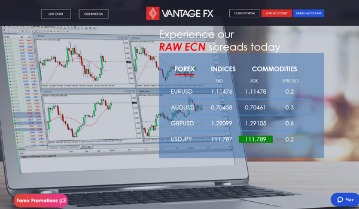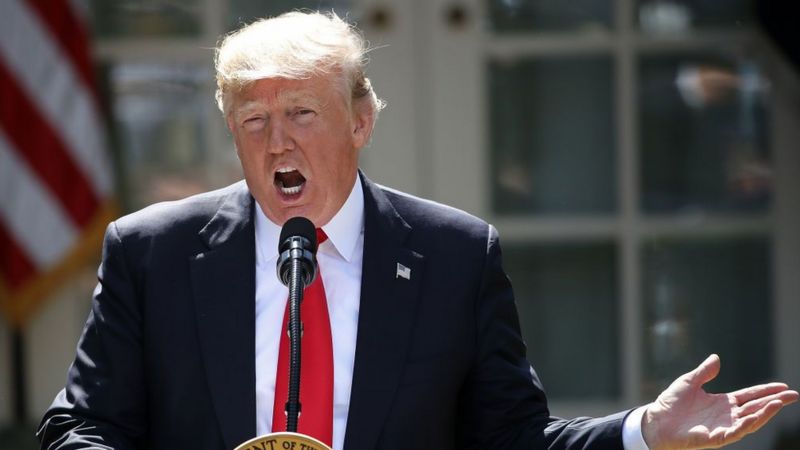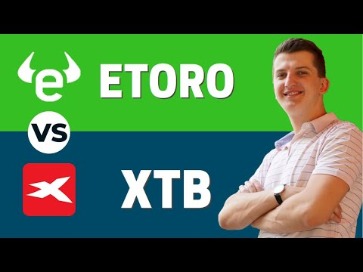Contents

The first is the relation of the closing price to the opening price. A hammer candlestick is a candlestick formation that is used by technical analysts as an indicator of a potential impending bullish reversal. A spinning top is a candlestick pattern with a short real body that’s vertically centered between long upper and lower shadows.

- Therefore, the hammer formation is a good reason to open long trades.
- Yes, the hammer candlestick is a classic pattern that effectively determines a trend reversal.
- In the example below, an inverted hammer candle is observed on the daily Natural Gas Futures chart and price begins to change trend afterwards.
- Traders view a hammer candlestick pattern to be an extremely reliable indicator in candlestick charting, especially when it appears after a prolonged downtrend.
This strategy usually encompasses an array of technical analysis elements such as price band, charts, high and low swings, and trend lines. A Hammer candlestick provides a bullish signal to the price. The color of a Hammer candlestick may be either bullish or bearish. This pattern is also called a “shooting star” because it resembles a falling star with a bright trail. The formation of this pattern indicates that the bulls were trying to rise. However, this was unsuccessful, and the bears lowered the price to the candle’s opening price zone.
The hammer has a small body with a long lower shadow, while the doji has a small body with generally equal upper and lower wicks. The hammer signals a potential reversal and is bullish, while the doji is neutral and doesn’t necessarily signal any specific price action. Only a hammer candle is not a strong enough sign of a bullish reversal. Therefore, one should look for three bearish candles preceding the hammer and the confirmation candlestick before taking a position.
Still, the mere fact that the buyers were able to press the price higher shows that they are testing the bears’ resolve. Similarly, the inverted hammer also generates the same message, but in a different manner. The price action opened low, but pushed higher to surprise the bears. Still, the bears still have control and they push back the price action to close near the lows. It is exactly the high close that signals that the bulls have just assumed control over the price action, as they defeated the bears in an important fight near the session lows. Hammers signal a potential capitulation by sellers to form a bottom, accompanied by a price rise to indicate a potential reversal in price direction.
US traders welcome at these brokers:
Here is another https://forex-trend.net/ where a perfect hammer appears; however, it does not satisfy the prior trend condition, and hence it is not a defined pattern. Lower shadow length should be at least twice the length of the real body. However, at the low point, some amount of buying interest emerges, which pushes the prices higher to the extent that the stock closes near the high point of the day. Notice the blue hammer has a very tiny upper shadow, which is acceptable considering the “Be flexible – quantify and verify” rule. If the paper umbrella appears at the top end of an uptrend rally, it is called the ‘Hanging Man’. If you’re having trouble understanding how to read candlesticks make sure you get the basics down first.
However, the hammer candlesticks are just as valid if the wicks only touch the support or resistance levels or even fall a little short of them. As with the hammer, you can find an inverted hammer in an uptrend too. But here, it’s called a shooting star and signals an impending bearish reversal. You can learn more about how shooting stars work in ourguide to candlestick patterns.
It looks just like a regular https://topforexnews.org/, but it indicates a potential bearish reversal rather than a bullish one. In other words, shooting stars candlesticks are like inverted hammers that occur after an uptrend. They are formed when the opening price is above the closing price, and the wick suggests that the upward market movement might be coming to an end. Combined with other trading methods such as fundamental analysis and other market analysis tools, the hammer candlestick pattern may provide insights into trading opportunities. This article will take you through what hammer candlestick patterns are and how to read them.

Hammer pattern is pretty indicative on 1H time frame and l if you catch early you could collect quite some PIPs in day-trade, even if it is a retracement move. So, once the conditions of your trading setup are met, you’ll look for an entry trigger to enter a trade. The purpose of an entry trigger is to identify a repeatable pattern that gets you into a trade. Like any other candlestick, the hammer has both advantages and disadvantages. While hammers still show you some clear intention – buyers and sellers are fighting, but you can still foresee who will win, Dojis show extreme uncertainty. In this case, we see a short entry near an all-time high made by the S&P 500 Index.
Hammer vs inverted hammer pattern
The hammer candlestick pattern can be used to spot trend reversals in any financial market. As such, to use hammer candlesticks in trading, you need to consider their position in relation to previous and next candles. The reversal pattern will either be discarded or confirmed depending on the context. Bullish hammer candles appear during bearish trends and indicate a potential price reversal, marking the bottom of a downtrend. In the example below, we have a bullish hammer candlestick . While hammer candlesticks and Doji candles may look similar at first glance, there are key differences between the two patterns.
But then https://en.forexbrokerslist.site/ take over once more, forcing the market back down towards the open. As with any candlestick pattern, you’ll want to confirm the new trend before you open your trade. You could do this by waiting a few periods to check that the upswing is underway, or by using technical indicators. Find a pattern with a short real body and a long lower shadow at the bottom or the top of the chart.
If a paper umbrella appears at the top end of a trend, it is called a Hanging Man. The bearish hanging man is a single candlestick and a top reversal pattern. The hanging man is classified as a hanging man only if an uptrend precedes it. Since the hanging man is seen after a high, the bearish hanging man pattern signals to sell pressure.

The picture below shows that the bulls tried to push the price higher, but then the bears stepped in and lowered the price back into the candle’s opening range. This pattern is most often used in conservative strategies due to its importance on price charts. The Gravestone Doji is similar to an inverted hammer or a shooting star. Also need to know do any of the candlesticks work intraday. If the paper umbrella appears at the top end of an uptrend, it is called the hanging man. The risk-averse will initiate the trade on the next day, only after ensuring that the 2nd day a red candle has formed.
The price action on the hammer formation day indicates that the bulls attempted to break the prices from falling further, and were reasonably successful. The inverted hammer doesn’t necessarily signal as strong of a move higher, but the pattern indicates that buyers are stepping in and that the downtrend may be coming to an end. Two additional things that traders will look for to place more significance on the pattern are a long lower wick and an increase in volume for the time period that formed the hammer. As a result, the next candle exploded higher as the bulls felt that the bears were not so dominant anymore.
The Inverted Hammer candlestick formation typically occurs at the bottom of a downtrend. Always include the context of price action with hammer trading. The best way to show how you can interpret hammer candlesticks in conjunction with price action is to look at some real trading examples.
Swing Trading Masterclass
Create a Libertex demo account to train before entering the real market. It covers all the securities and indicators that are available for a real account. Even if the hammer is a bullish pattern, its colour doesn’t matter. However, if the candlestick is green , the signal is stronger.
We put together an easy infographic cheat sheet of the top candlestick patterns to help train your eye. While a hammer candlestick pattern signals a bullish reversal, a shooting star pattern indicates a bearish price trend. Shooting star patterns occur after a stock uptrend, illustrating an upper shadow. Essentially the opposite of a hammer candlestick, the shooting star rises after opening but closes roughly at the same level of the trading period. A hammer candlestick pattern occurs when a security trades significantly lower than its opening but then rallies to close near its opening price. The hammer-shaped candlestick that appears on the chart has a lower shadow at least twice the size of the real body.

In case the formation of the pattern takes place in an uptrend, signaling a bearish reversal, it is the hanging man pattern. On the other hand, if this pattern appears in a downtrend, indicating a bullish reversal, it is a hammer. The hammer candlestick is also considered more reliable when it forms at a price level that’s been shown as an area of technical support by previous price movement. Hammer and inverted hammer are both bullish reversal patterns that take place at the end of a downtrend.
TradingView Scripts
Hammers can be measured on any timeframe, but the larger the timeframe the more thorough the hammer candlestick will be due to more participants involved. A hammer candlestick mainly appears when a downtrend is about to end. However, the inverted hammer is formed at the end of the downtrend, while the shooting star occurs after a strong uptrend. The limitation of the hammer candlestick is that it might not signal a long-term new trend but only a temporary change in the movement. When an inverted hammer candle is observed after an uptrend, it is called a shooting star. In the 5-minute Starbucks chart below, a bearish inverted hammer denotes a change in trend.
I had a few hundred British pounds saved up , with which I was able to open a small account with some help from my Dad. I started my trading journey by buying UK equities that I had read about in the business sections of newspapers. Having this first-principles approach to charts influences how I trade to this day. A bullish hammer, positioned for example, at a support level or after bearish candles, has a small body at the top of the candle and a long wick beneath the body. Hammers that appear at support levels or after several bearish candles are bullish. Inverted hammers at resistance levels or after several bullish candles are bearish.
It aids one in identifying the apt time to enter a market. Using hammer candles in technical analysis, traders can identify potential points of a bullish price reversal at various time intervals. The hammer candlestick is a pattern that works well with various financial markets.
Especially when using intraday strategies, one of the most popular moving averages is the EMA because it can react to price changes faster. The chart below shows the hammer pattern on the FTSE 100 index. On the one hand, you can choose to observe the market by relying on simple patterns like breakouts, trend lines, and price bars. On bigger timeframes , the Hammer candlestick demonstrates a prolonged trend change.
After all, no technical analysis tool or indicator can guarantee a 100% profit in any financial market. The hammer candlestick chart patterns tend to work better when combined with other trading strategies, such as moving averages, trendlines, RSI, MACD, and Fibonacci. The hammer candlestick is a bullish trading pattern that may indicate that a stock has reached its bottom and is positioned for trend reversal. Specifically, it indicates that sellers entered the market, pushing the price down, but were later outnumbered by buyers who drove the asset price up. Importantly, the upside price reversal must be confirmed, which means that the next candle must close above the hammer’s previous closing price.
